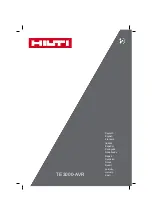
Page 35
EA Elektro-Automatik GmbH
Helmholtzstr. 31-37 • 41747 Viersen
Germany
Fon: +49 2162 / 3785-0
Fax: +49 2162 / 16230
www.elektroautomatik.de
EL 9000 B 15U/24U Series
3.2.2
Current regulation / constant current / current limiting
Current regulation is also known as current limitation or constant current mode (CC) and is fundamental to the
normal operation of an electronic load. The DC input current is held at a predetermined level by varying the internal
resistance according to Ohm’s law R = U / I such that, based on the input voltage, a constant current flows. Once
the current has reached the adjusted value, the device automatically switches to constant current mode. However,
if the DC power consumption reaches the adjusted power level or the maximum possible power in derating con-
dition (see
), the device will automatically switch to power limitation and adjust the input current according
to I
MAX
= P
SET
/ U
IN
, even if the maximum current set value is higher. The current set value, as determined by the
user, is always and only an upper limit.
While the DC input is switched on and constant current mode is active, the condition “CC mode active” will be
shown on the graphics display by the abbreviation
CC
, as well it will be passed as a signal to the analog interface
and stored as internal status which can be read via digital interface.
3.2.3
Resistance regulation / constant resistance
Inside electronic loads, whose operating principle is based on a variable internal resistance, constant resistance
mode (CR) is almost a natural characteristic. The load attempts to set the internal resistance to the user defined
value by determining the input current depending on the input voltage according to Ohm’s law I
IN
= U
IN
/ R
SET
.
The internal resistance is naturally limited between almost zero and maximum (resolution of current regulation
too inaccurate). As the internal resistance can’t have a value of zero, the lower limit’s defined to an achievable
minimum. This ensures that the electronic load, at very low input voltages, can consume a high input current from
the source, up to the rating.
While the DC input is switched on and constant resistance mode is active, the condition “CR mode active” will
be shown on the graphics display by the abbreviation
CR
, as well it will be stored as internal status which can be
read via digital interface.
3.2.4
Power regulation / constant power / power limitation
Power regulation, also known as constant power (CP), limits the DC input power of
the device to the adjusted value so that the current flowing from the source, together
with the input voltage, achieves the desired value. The device would also regulate
the input current according to I
IN
= P
SET
/ U
IN
upon voltage changes on the input.
Power limitation operates according to the auto-range principle such that at lower
input voltages higher current can flow and vice versa, in order to maintain constant
power within the range P
N
(see diagram to the right).
While the DC input is switched on and constant power operation is active, the con-
dition “CP mode active” will be shown on the graphic display by the abbreviation
CP
, as well it will be stored as internal status which can be read via digital interface.
Constant power operation impacts the internal set current value. This means that the maximum set current may
not be reachable if the set power value according to I = P / U sets a lower current. The user defined and displayed
set current value is always the upper limit only.
3.2.4.1
Temperature dependent derating
This series consists of conventional electronic loads which convert the consumed electrical energy into heat and
dissipate it. In order to avoid overheating, the device will automatically reduce, i.e. derate the actual input power
when heating up. It means, at a cold start it can take the peak power (see technical specs) for a certain time before
it starts reducing.
This derating is depending on the ambient temperature. It means, that at 10°C the load can take the peak power
for a much longer time than at 20°C ambient temperature or higher. Disregarding the ambient temperature, the
derating will be constant at a certain power per degree Kelvin (x W/°K, see technical specifications), down to the
steady power which is rated for the typical ambient temperature of 25°C (77°F) and further down.
The time which elapses during the derating phase, is typically between 150 and 200 seconds. It includes the peak
power time.
However, if the device is supplied with less power than the corresponding steady power for the ambient temperature
of the device’s location, the derating won’t impact the operation. Though the internal power reduction is always
imminent. For example, if you would run a model with 13500 W steady power at 8000 W constant actual power,
while the power limit’s set to 21600 W, and your source would make a voltage step or the load a current step, the
power limit of 21600 W could still not be achieved.
















































